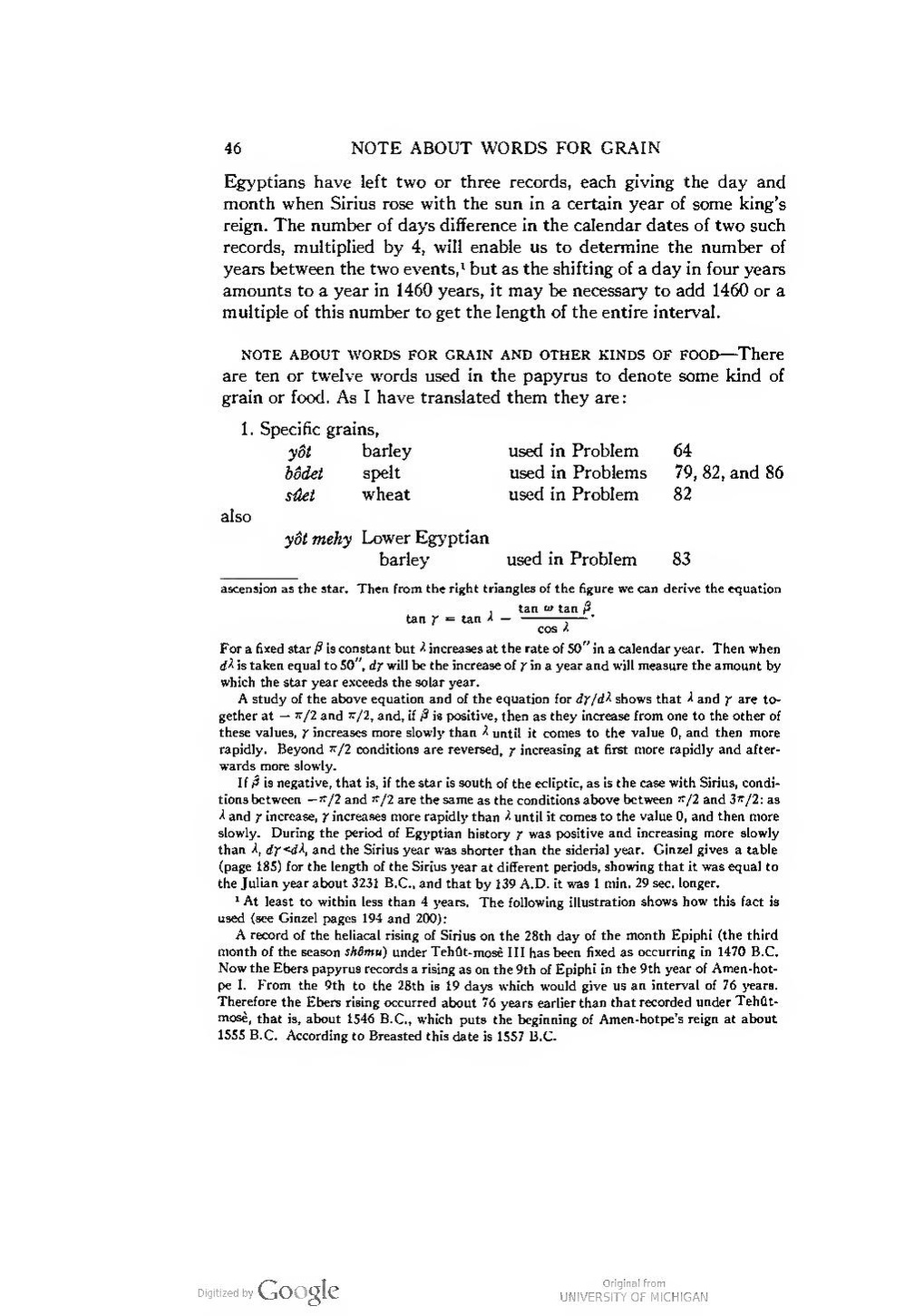Egyptians have left two or three records, each giving the day and month when Sirius rose with the sun in a certain year of some king’s reign. The number of days difference in the calendar dates of two such records, multiplied by 4, will enable us to determine the number of years between the two events,[1] but as the shifting of a day in four years amounts to a year in 1460 years, it may be necessary to add 1460 or a multiple of this number to get the length of the entire interval.
NOTE ABOUT WORDS FOR GRAIN AND OTHER KINDS OF FOOD—There are ten or twelve words used in the papyrus to denote some kind of grain or food. As I have translated them they are:
| 1. Specific grains, | ||||
| yôt | barley | used in Problem | 64 | |
| bôdet | spelt | used in Problems | 79, 82, and 86 | |
| sûet | wheat | used in Problem | 82 | |
| also | ||||
| yôt mehy | Lower Egyptian barley | used in Problem | 83 | |
- ↑ At least to within less than 4 years. The following illustration shows how this fact is used (see Ginzel pages 194 and 200):
A record of the heliacal rising of Sirius on the 28th day of the month Epiphi (the third month of the season shômu) under Tehût-mosè III has been fixed as occurring in 1470 B.C. Now the Ebers papyrus records a rising as on the 9th of Epiphi in the 9th year of Amen-hotpe I. From the 9th to the 28th is 19 days which would give us an interval of 76 years. Therefore the Ebers rising occurred about 76 years earlier than that recorded under Tehût-mosè, that is, about 1546 B.C., which puts the beginning of Amen-hotpe’s reign at about 1555 B.C. According to Breasted this date is 1557 B.C.
ascension as the star. Then from the right triangles of the figure we can derive the equation
For a fixed star β is constant but λ increases at the rate of 50″ in a calendar year. Then when dλ is taken equal to 50″, dγ will be the increase of γ in a year and will measure the amount by which the star year exceeds the solar year.
A study of the above equation and of the equation for dγ/dλ shows that λ and γ are together at — π/2 and π/2, and, if β is positive, then as they increase from one to the other of these values, γ increases more slowly than λ until it comes to the value 0, and then more rapidly. Beyond π/2 conditions are reversed, γ increasing at first more rapidly and afterwards more slowly.
If β is negative, that is, if the star is south of the ecliptic, as is the case with Sirius, conditions between — π/2 and π/2 are the same as the conditions above between π/2 and 3π/2: as λ and γ increase, γ increases more rapidly than λ until it comes to the value 0, and then more slowly. During the period of Egyptian history γ was positive and increasing more slowly than λ, dγ<dλ, and the Sirius year was shorter than the siderial year. Ginzel gives a table (page 185) for the length of the Sirius year at different periods, showing that it was equal to the Julian year about 3231 B.C., and that by 139 A.D. it was 1 min. 29 sec. longer.

